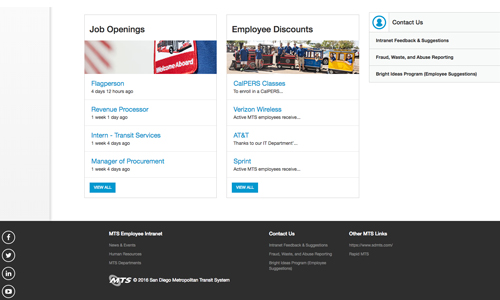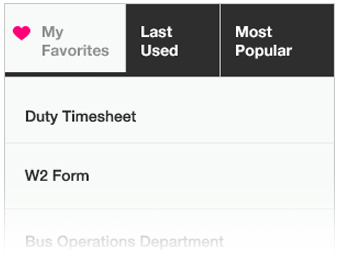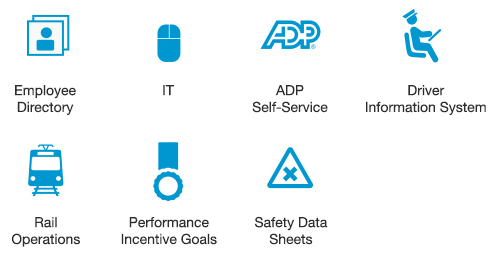
IT Service Requests Priority Levels
|
Priority |
Target Response Time in Hours |
Target Completion Time in Hours |
|
10 - Critical |
1 |
4* |
|
20 - High |
2 |
8 |
|
30 - Standard |
3 |
16 |
|
35 - Low |
4 |
32 |
|
40 - Request |
8 |
40 |
|
41 – Project Proposal |
Custom based on Project |
|
|
50 – Operations Project |
Custom based on Project |
|
|
51 - ITAC Project |
Custom based on Project |
|
|
89 - Routine Change |
30 Days |
|
|
90 - Significant Change |
Custom based on Change |
|
|
91 - Emergency Change |
Custom based on Change |
|
|
*Response/Completion time not constrained to business hours |
||
10 – CRITICAL: Service Requests designated as 10 - Critical are those where one or more major services are down or system/network performance has suffered a catastrophic event causing multiple critical services to fail.
20 – HIGH: Service Requests designated as 20 - High are those where a major technology resource is down or system/network performance is degraded resulting in a severe detrimental impact to critical business operations.
30 – STANDARD: Service Requests designated as 30 - Standard are those where a minor technology resource is down or system/network performance is somewhat degraded. A work around exists and/or business unit can continue operations.
35 – LOW: Service Requests designated as 35 - Low are those where a piece or equipment is malfunctioning (printer, workstation or peripheral device), a minor service or configuration change, or minor access change that does not affects the Customer(s) ability to work.
40 – REQUEST: Service Requests designated as 40 - Request are those where the customer is not experiencing technical difficulties and rather has a question or other item that needs an answer or direction. May include software/hardware moves/adds/changes that are outside the scope of break/fix items.
41 – CIP PROJECT PROPOSAL: Service Requests designated as 41 – CIP Project Proposal are those where a project is being proposed and funding is being requested. All CIP projects must be approved during the annual CIP budget process or by the Information Technology Advisory Committee (ITAC)
50 – OPERATIONS PROJECT: Service Requests designated as 50 – Operations Project are mandatory projects which must be undertaken and carried out at a particular time. Decisions are based on contracts, laws, company procedures, hardware/software end of life etc.
51 – ITAC PROJECT: Service Requests designated as 51 – ITAC Project are discretionary projects which can or should be undertaken and are not based on ‘have to’, but on a ‘should’. Decisions are based on best practices, business knowledge etc. and are approved by the Information Technology Advisory Committee (ITAC).
89 – ROUTINE CHANGE: Routine or minor changes are changes that may be done at any time as these have been categorized as low risk to the Agency and the procedures are known and well documented. Activities can include performing routine actions which keep devices in working order (known as scheduled maintenance) or prevent trouble from arising (preventative maintenance). Examples of this type of are:
- Application-based security or business needs patches
- Regularly scheduled maintenance
- Operating system patches (critical, hot-fixes, and service packs) *
* Depending on the risk the change may need to be reviewed as Significant/Major change. Please discuss with your manager.
90 – SIGNIFICANT CHANGE: Significant or major changes are classified as needing approval and these must be planned in advance and submitted for approval from the Change Advisory Board (CAB). The change request should also suggest a time for this change to take place via the change form before being carried out. The CAB will have ultimate say if the change goes ahead at the suggested time or not. Detailed in the change request should be the documentation about what work is going to happen and the perceived benefit and impact to the users. These types of changes should always have a back out plan or mitigating action plan attached. Examples of this type of are:
- Change that results in an interruption to a service, or has a significant risk of an interruption to service
- Change that results in a business or operational practice change
- Changes in any system that affect disaster recovery or business continuity
- Introduction or discontinuance of a service
- Operating system patches (critical, hot-fixes, and service packs) *
* Depending on the risk the change may need to be reviewed as Routine/Minor change. Please discuss with your manager.
91 – EMERGENCY CHANGE: Emergency or unscheduled outages (server crashes, etc.) may require immediate attention whenever they happen. The Change logging form should still be filled in, but this can be done retrospectively. Examples of this type of are:
- Department or Building is without service
- A severe degradation of service requiring immediate action
- A system/application/component failure causing a negative impact on business operations
- A response to a natural disaster
- A response to an emergency business need
With any emergency or unscheduled changes an After Action Report is required. This report should be created by the assigned technician, reviewed by the appropriate manager and distributed (by the manager) to the Executive Leadership of the Agency in a timely manner and no later than 24 hours.

 Employee Directory
Employee Directory IT Help Desk
IT Help Desk ADP Self-Service
ADP Self-Service Driver Information System
Driver Information System Bus Operations
Bus Operations Rail Operations
Rail Operations Performance Incentive Program
Performance Incentive Program Safety Data Sheets
Safety Data Sheets



